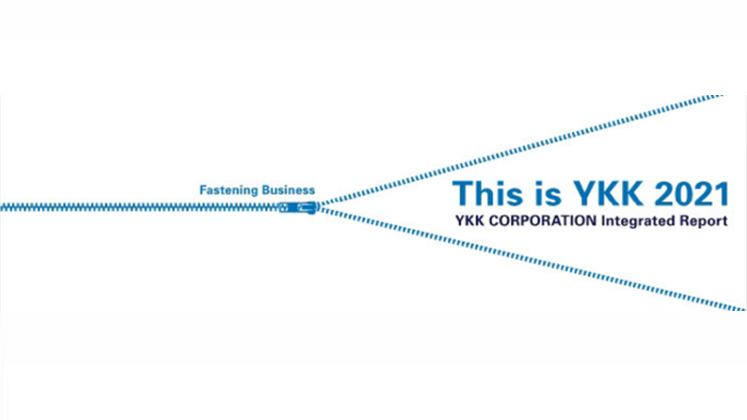YKK Corporation has released an integrated report – “This is YKK 2021” – which highlights the company’s progress on medium-term management strategies, value creation aimed at long-term sustainable growth and sustainability initiatives.
“This is YKK 2021” reports both financial and non-financial information and the mid- and long-term aims of YKK’s Fastening Business, that’s a part of the company’s efforts under this new policy to further engage with stakeholders.
According to YKK, the company underwent global restructuring in April 2021 to better achieve the goals of its new Mid-term Business Policy – “Sustainable growth under the new normal.”
Detailed data about YKK’s progress on ESG goals has been published in a supplemental “Data Book.” The Data Book showcases YKK’s progress on the YKK Sustainability Vision 2050, the company’s roadmap for achieving climate neutrality by 2050.
Targets were set for five themes – climate change, material resources, water resources, chemical management and respect people. The company further reveals that notable feats were during FY 2020.
In Climate Change efforts, the achievements include – 20 per cent reduction in Scope 1, 2 GHG emissions (from a 2018 baseline); 36 per cent reduction in Scope 3 GHG emissions (from a 2018 baseline); and Greenhouse gas reduction target for FY 2030 certified by SBTi as aligned with “1.5°C target.”
In Material Resources, the achievements are – 88 per cent increase in sales of NATULON series of recycled zippers (year-on-year); landfill waste reduced by 2,700 tonnes (year-on-year); and production recycling increased to 82.3 per cent.
Feat in Water Resources was – 18 per cent reduction in total water intake by all manufacturing sites (year-on-year).
On the other hand, achievements in Chemical Management include – strengthened in-house standards and surveyed 792 suppliers on their compliance; completed renewal of OEKO-TEX certification for YKK products at 40 companies; and expanded AcroPlating, a new propriety plating technology for brass that eliminates the harmful chemicals used in traditional electroplating.







